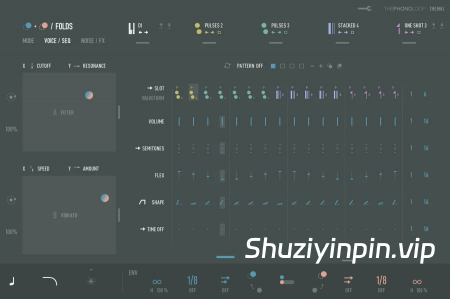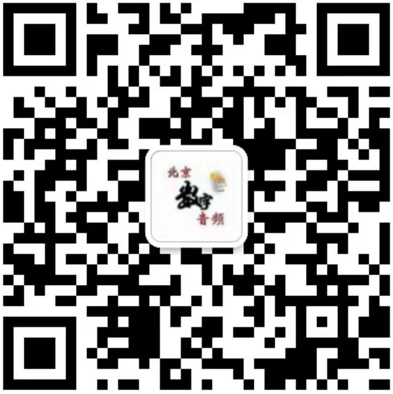
P2P | 31 July 2025 | 9.58 GB
探索老机器之美的画布
这是一款来自 70 年代的经典机电键盘,拥有 16 个动态层,以及一组 60 个额外的声音设计源,这些源通过使用 Eurorack 模块和磁带循环对原始素材进行混编,并辅以共振器和物理建模合成技术而创建。
所有这些都集成在一个兼容 MPE 的声音引擎中,该引擎拥有两个独立的循环/颗粒核心,专为缓慢演变的纹理和快速爆发的声音而设计。您可以通过加载自己的样本进行进一步扩展。
来吧,踏上远离常规道路的冒险之旅。
探索70 年代经典
我们一直想捕捉这款机电经典的精髓——本质上,我们指的是一台已有 50 多年历史的机器的所有机械咔嗒声、噪音和美丽的缺陷。
起初,我们将其视为我们的 Cassette 系列的自然演变,更进一步:16 个动态层、释放和机械样本——最终仍然通过磁带。然后,出于好奇,我们将原始样本加载到 Tapes 引擎中并开始尝试——我们很快就清楚了我们应该如何塑造它的最终形式。
结果?一种深度采样、富有表现力的乐器——一个不断变化的纹理的游乐场,所有这些都装在一个为发现和实验而构建的声音引擎中。
就像我们喜欢的方式一样。
两个独立的粒度引擎虽然
themkI 建立在 Tapes.01 中引入的引擎之上,但它并不意味着是版本 2。相反,它将事情带向不同的方向,更适合采样材料。
动画模式(在磁带中称为 Swarm 模式)现在具有复调调制功能,每个层都在自己独立的引擎上运行(这也使其与 MPE 兼容)。此设置允许您将标准复音播放(单模式)与序列/颗粒、两种单模式或两种序列/颗粒相结合。
我们还引入了一个乐器模式系统,目前有 16 种,旨在让事情变得简单有趣,同时仍然鼓励深入的声音探索。
两个独立的音序器
每个层都有自己的 16 步音序器,可用于动画和单一模式,可用作特定于语音的修改器。例如,你可以将其设定为在音符 1-3 上播放一个音源,在音符 4-6 上播放另一个音源,每三个音符上移一个八度音,每五个音符反转一次,对最后几个音符失谐,或者设定每个音符的唯一样本起始位置。这样的例子不胜枚举。
另一个例子,第一层可能会播放具有经典 70 年代灵魂氛围的单个音符,而第二层则通过调制轮或 MPE 控制器淡入,以精细方式扫描波形或播放由语音音序器/修改器设置的持续时间和位置的微循环。
更新 1.1
版本 1.1 带来了更清晰的对比度以提高可见性,以及新的 GUI 颜色选项。使用“选项”部分右上角的新菜单自定义外观。
将这种乐器变为现实需要大量的工作、大量的绘图板和大量的书般的快乐——我们真诚地希望它能像它激励我们一样激励您。
请随时查看下面的视频,其中我们展示了使用该乐器的几种方法。
DI
通过通用音频管前置放大器和 Apogee Symphony 捕获干净。原始的声音,非常适合捕捉每一个小瑕疵。
甲板 A
在学校使用的旧盒式录音机上录制,增加了明显的噪音(尤其是在瞬态上)和一点饱和度。
甲板 B
使用故障的旧波兰 Unitra 盒式录音机(与我们在盒式磁带系列中使用的相同)捕获,引入了健康剂量的哇和颤动,以及其他磁带缺陷。
规格
– 10.50GB 大小(NCW 压缩后)
– 500 个预设
– 12507 个样本
– 主要来源:
+ 干净(DI 通过电子管前置放大器)加上两个录制在不同盒式磁带卡座(卡座 A、卡座 B)
上录制的
+ 16 个动态层
+ 16 个动态层释放样本
– 机械样本:
+ 6 个动态层
+ 6 个动态层释放样本
+ 4x 循环
+ 带有 4 个循环的额外踏板噪声样本
– 声音设计源:
+ 60 个声源,分为 7 个类别:堆叠、磁带循环、脉冲、机械、切片和一次拍摄,
最多 5 个动态层
+ 噪声样本
– 126 个噪声样本,分为 5 个类别:硬件、磁带循环、黑胶唱片、工业和自然
适用于 Kontakt Player 或 Kontakt FULL v7.10.7 或更高版本!
A canvas for exploring the beautiful imperfections of an old machine
An electro-mechanical keyboard classic from the ’70s with 16 dynamic layers, and a set of 60 additional sound design sources created by mangling the original material using Eurorack modules and tape loops, embellished with resonators and physical modelling synthesis.
All of this is housed in an MPE-compatible sound engine with two independent looping / granular cores, designed for both slow, evolving textures and fast bursts of sound. Further expandable by loading your own samples.
Go ahead, embark on an adventure far from well-worn paths.
An exploration of a 70s classic
We’ve long wanted to capture the essence of this electro-mechanical classic – and by essence, we mean all the mechanical clicks, noises, and beautiful imperfections of a machine over 50 years old.
At first, we saw it as a natural evolution of our Cassette series, taken few steps further: 16 dynamic layers, release and mechanical samples – all still passed through tape in the end. Then, out of curiosity, we loaded the raw samples into the Tapes engine and started playing around – and it quickly became clear how we should shape its final form.
The result? A deeply sampled, expressive instrument – a playground of evolving textures, all housed in a sound engine built for discovery and experimentation.
Just the way we like it.
Two independent granular engines
While themkI builds on the engine introduced in Tapes.01, it’s not meant to be version 2. Instead, it takes things in a different direction, better suited to the sampled material.
Animated mode (known as Swarm mode in Tapes) now features polyphonic modulation, with each layer running on its own independent engine (which also makes it MPE compatible). This setup allows you to combine standard polyphonic playback (Single mode) with sequenced / granular, two Single modes or two sequenced / granular.
We’ve also introduced a system of instrument modes, 16 at the moment, designed to keep things simple and fun while still encouraging deep sound exploration.
Two independent sequencers
Each layer has its own 16-step sequencer, available in both Animated and Single mode, where it can act as a voice-specific modifier. For example, you can set it to play one sound source on notes 1–3, another on notes 4–6, shift every third note up an octave, reverse every fifth note, detune the last few notes, or set a unique sample start position per note. The list goes on.
Another example, first layer might play single notes with a classic ’70s soul vibe, while the second is faded in via the mod wheel or an MPE controller, scanning through the waveform in a granular fashion or playing micro-loops with duration and position set by the voice sequencer / modifier.
Update 1.1
Version 1.1 brings sharper contrast for better visibility, along with new GUI colour options. Customise the look using the new menu in the top-right corner of the Options section.
It took a lot of work, plenty of trips back to the drawing board, and a good dose of nerdy joy to bring this instrument to life – and we genuinely hope it’ll inspire you as much as it inspires us.
Feel free to check out the videos below, where we show a few ways to work with the instrument.
DI
Captured clean through a Universal Audio tube preamp and Apogee Symphony. Pristine sound that’s perfect for catching every little imperfection.
Deck A
Recorded on an old cassette deck used in schools, adding noticeable noise (especially on the transients) and a little bit of saturation.
Deck B
Captured using a malfunctioning old Polish Unitra cassette recorder (the same we used in our Cassette series), introducing a healthy dose of wow and flutter, along with other tape imperfections.
Specifications
– 10.50GB Size (after NCW compression)
– 500 Presets
– 12507 Samples
– Main sources:
+ clean (DI through tube preamp) plus two recorded on different cassette decks (deck A, deck B)
+ 16 dynamic layers
+ 16 dynamic layers release samples
– Mechanical samples:
+ 6 dynamic layers
+ 6 dynamic layers release samples
+ 4x round robins
+ additional pedal noise samples with 4x round robins
– Sound design sources:
+ 60 sound sources in 7 categories: stacked, tape loop, pulses, mechanical, slices and one shot
up to 5 dynamic layers
+ Noise samples
– 126 noise samples in 5 categories: hardware, tape loops, vinyl, industrial and natural
Works in Kontakt Player or Kontakt FULL v7.10.7 or higher!
P2P

![[兼容Pro Tools 版本 70 种乐器音色库] Pro Tools Factory Essentials v1.0.0 [KONTAKT](3.2GB)](https://www.shuziyinpin.vip/wp-content/uploads/2025/12/15122516_pro-tools-factory-essentials.png)
![[海洋星辰氛围木管乐器音源] Emergence Audio Vela Woodwinds v1.1.0 [KONTAKT](3.93GB)](https://www.shuziyinpin.vip/wp-content/uploads/2025/08/Vela-Woodwinds.png)
![[弦乐氛围纹理音源] Slate and Ash Spectres v1.1.0 [KONTAKT](26.7GB)](https://www.shuziyinpin.vip/wp-content/uploads/2025/12/Spectres-v1.1.0.png)
![[更新:7套宝藏音源 全家桶] Slate and Ash STRINGS/RUINS/MIRRORS/Spectres/Choreographs/Landforms/Cycles [KONTAKT](200GB+)](https://www.shuziyinpin.vip/wp-content/uploads/2025/12/Slate-and-Ash-661x1024.jpg)
![[音调合成器/吉他混合音色] Sam Thomas Music The Sound of Love Lost [KONTAKT](3.57GB)](https://www.shuziyinpin.vip/wp-content/uploads/2025/12/am-thomas-music-the-sound-of-love-lost.png)
![[顶级混合钢琴乐器音色库] Audio Imperia Klavier (Player Edition) [KONTAKT](22.44GB)](https://www.shuziyinpin.vip/wp-content/uploads/2025/12/Klavier.png)

评论0